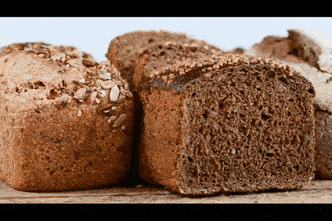- The Daily Tonic
- Posts
- Is daylight savings time hurting our health?
Is daylight savings time hurting our health?
Does “Whole Grain” actually mean healthy?
Monday. Daylight saving time is officially here, giving us all an additional hour of evening daylight. Was that worth the hour of sleep we all lost? Probably not. Was that worth my toddler throwing a fit at bedtime last night since his internal clock is all out of whack? Definitely not.
A study in the Journal of Clinical Medicine notes a slight increase in heart attack rates associated with the clock change (CHECK OUT THE STUDY). There is also apparently an increase in toddler tantrums. Seriously—why is daylight savings time still a thing? Let’s dive in.
DEEP DIVE
I Don’t Want To “Spring Forward” Anymore
Springing forward for Daylight Saving Time (DST) is a tradition that most Americans participate in. Hawaii and Arizona don’t do DST because they are better than us, but for everyone else, we diligently set our clocks an hour ahead every spring to “enjoy” more evening daylight.
However, not everyone thinks DST is best for our health and well-being. The American Academy of Sleep Medicine (AASM) has called for an end to the annual time change, advocating for a permanent standard time instead. Why end DST? The academy highlights the health risks, including increased traffic fatalities, misalignment with our natural circadian rhythms, and a spike in hospital admissions and other health issues following the time change (It’s all true—READ MORE HERE).
The move to adjust our clocks comes with supposed benefits like lower energy costs and extended evening daylight hours. However, evidence suggests the disadvantages, particularly the health implications, may outweigh these perks. Increased risks of cardiovascular events, mood disturbances, and even safety incidents at hospitals have all been associated with the shift to DST.
To mitigate the adverse effects of DST, experts recommend adjusting sleep schedules slightly before the time change, aiming for at least seven hours of sleep, and seeking early morning sunlight to help reset the internal clock.
The problem is that despite these measures, the underlying issues caused by the disruption in our natural sleep patterns don’t really get better, leading professionals (and parents with small kids) to argue for a more consistent approach to timekeeping.
Our neighbors to the south figured it out. Mexico is a recent example of a country that abolished DST, citing improvements in sleep quality and potential reductions in sleep disorders (READ MORE).
Unlike the United States, where some advocate year-round daylight saving time, Mexico adopted standard time, aligning more closely with natural circadian rhythms. Sleep experts globally support this shift, arguing that the biannual clock change poses unnecessary health risks that don’t really help anyone.
Of course, the debate in the U.S. remains polarized, with some lawmakers advocating for permanent daylight saving time to maximize sunlight during working hours in the winter. It just wouldn’t be American enough if we finally found some common ground on an issue.
Despite the debate, the consensus among sleep scientists and health professionals leans toward ending DST. For the record, the Daily Tonic is on board with squashing DST.
The key takeaway? Daylight savings time has to go. We aren’t saving any daylight, and we are harming our health in the process.
As discussions continue, the experiences of countries like Mexico will hopefully provide valuable insights into the benefits of not messing with the clocks. The choice between DST and standard time is not merely a matter of personal preference or energy savings but a significant health consideration that deserves careful evaluation.
However, the push for a permanent solution, whether it be standard time or daylight saving time, reflects a growing recognition that what we are doing now just isn’t working. Let’s hope the bright minds of D.C. can figure this one out. Either that, or we can all move to Hawaii or Arizona.
OUR PICKS
Tonic Shots
Every step past 2,200 steps can help lower the risk of early death and heart disease. (READ MORE)
Is extending life by weeks worth the toll some cancer drugs take? Doctors push for 'common-sense oncology. (READ MORE)
Doctors call attention to 'margarita rashes' from sun exposure as spring approaches. (READ MORE)
TRENDING
Women who do strength training live longer. How much is enough?

Resistance training does more than help us build strong muscles.
A new study finds women who do strength training exercises two to three days a week are more likely to live longer and have a lower risk of death from heart disease, compared to women who do none.
"We were incredibly impressed by the finding," says study author Martha Gulati, who is also the director of preventive cardiology at Cedars Sinai in Los Angeles.
Of the 400,000 people included in the study, only 1 in 5 women did regular weight training. But those who did, saw tremendous benefits.
FROM THE ARCHIVE
Does “Whole Grains” Actually Mean Healthy?

Ever wander down a grocery store aisle surrounded by labels boasting “whole grain” or “whole wheat”? Walk into a Whole Foods, and you can’t take two steps without bumping into something made with “whole grains.” It’s easy to think these might be the healthier option. I mean, it sounds good. But is that always the case?
First things first — what is “whole grain” or “whole wheat”? Wheat is a grain that turns into glucose when digested, raising our blood sugar. Grains can be whole or refined. Whole grains have everything intact: the bran, germ, and endosperm. Refined grains miss out on the bran and germ because they get taken away during processing. This refining step makes the grain lose its fiber, iron, and some vitamins.
Now, let’s talk about blood sugar. Our body loves fiber because it helps keep our blood sugar levels in check. Whole grains, being fibrous, shouldn’t raise blood sugar as fast as refined grains. But there’s a catch: even if “whole wheat” has been refined into flour, your body will absorb it quickly. This means it can raise your blood sugar super fast, just like white bread!

